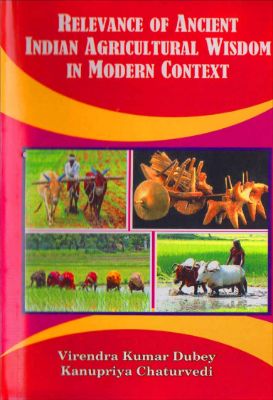When it comes to clothing, India possesses a rich tapestry of tradition that weaves together ancient wisdom and modern style—a striking reflection of the country’s diverse climate and cultural heritage. The contemporary fashion landscape might seem at odds with sustainability, but Indian clothing offers fascinating insights that not only challenge the status quo but also provide climate-smart solutions for today’s conscientious consumer. This article delves into the intricate relationship between clothing, weather, and the wisdom gleaned from centuries of Indian practices. So buckle up as we unravel these climate-smart secrets!
1. The Fabric of Tradition: A Cultural Mosaic
One cannot discuss Indian clothing without acknowledging the plethora of fabrics indigenous to the subcontinent—each one imbued with its own cultural significance. Cotton, for instance, has been cultivated for millennia and is lauded for its breathability and moisture-wicking properties. Embracing these fabrics is essential, especially when considering the climatic extremes of India, where scorching summers and monsoon rains challenge sartorial choices. The lightweight nature of cotton allows for comfort during the sweltering heat, making it a primary choice for summer wear. Shouldn’t we consider such thoughtful fabric selections when choosing our own seasonal clothing?
2. Layering: The Art of Versatility
The ancient practice of layering is not merely a survival technique; it’s an art form that reflects a deep understanding of temperature fluctuations. Various regions of India utilize multiple layers, from the shawls of Kashmir to the dupattas worn with salwar kameez in the north. Each layer serves a specific purpose—providing warmth during chilly evenings, offering protection against sun exposure, or adapting seamlessly as conditions change throughout the day. This versatility prompts a provocative inquiry: How can we modernize the art of layering while remaining mindful of our environmental footprint? Are we integrating enough functional pieces into our wardrobes?
3. Sustainable Dyeing Techniques: Nature Meets Fashion
Traditional Indian clothing is as vibrant as it is meaningful, often enhanced through natural dyeing techniques that have been passed down through generations. Extracts from indigo, turmeric, and pomegranate create colors that are not only striking but also eco-friendly. These methods starkly contrast with the synthetic dyes prevalent in fast fashion, which can be harmful to rivers, wildlife, and human health. However, is it too much to ask for a revival of these ancient practices in our closets? By choosing clothes dyed with natural pigments, we can make stylish statements while advocating for environmental sustainability.
4. The Kurta: A Flair for All Seasons
Arguably one of the most versatile garments, the kurta transcends seasons and styles. This knee-length top, worn by both men and women, adapts beautifully to the wearer’s needs. In the sweltering summer months, a lightweight cotton kurta can be paired with palazzo pants or leggings for ease of movement. Conversely, during the cooler months, layering with a warm shawl and pairing it with heavier fabrics can create a chic, functional outfit. By considering the kurta’s potential, one is led to wonder: Why do we still cling to clothing that does not seamlessly navigate the changing climate? Could the timeless kurta be our answer?
5. Traditional Garments as Statements of Identity
In a world increasingly geared towards uniformity, traditional Indian garments stand out as significant emblems of identity and cultural richness. From the saree to the lungi, these garments tell stories of communities, rituals, and heritage. By embracing and wearing these pieces, individuals not only adorn their bodies but also honor the traditions from which they originate. As global citizens, should we not ask ourselves: What stories do our clothing choices tell? Are we merely following trends, or are we weaving our narratives into the fabric of fashion?
6. Climate and Craftsmanship: An Intriguing Synergy
The adept craftsmanship underlying Indian clothing has always evolved in response to nature. The intricate handloom techniques, such as khadi, were born out of a necessity to create climate-appropriate apparel while supporting local economies. Khadi is not merely fabric; it’s a movement advocating for self-sufficiency and sustainability—a call to arms for the modern consumer. So, one must ponder, how can we harness this spirit of craftsmanship today? As we prioritize ethically sourced and handmade garments, can we shift the paradigm in the fashion industry towards a more sustainable future?
7. Embracing Minimalism Without Compromising Style
In a climate-impacted world grappling with overconsumption, minimalism emerges as a pathway to sustainability. The traditional Indian wardrobe encourages a capsule approach, emphasizing quality over quantity. Each piece is meant to be cherished, valued, and worn across seasons. How often do we find ourselves in closets brimming with unworn outfits? Embracing minimalism does not equate to sacrificing style; rather, it invites us to curate personalized collections that resonate with our lifestyles. Is it time to embrace an intentional wardrobe and redefine our relationship with clothing?
8. A Call to Action
As we stand at the intersection of ancient wisdom and modern fashion sensibilities, it is imperative to recognize that the secrets of Indian clothing offer timeless lessons for a sustainable future. The compelling merits of breathable fabrics, versatile layering, natural dyeing techniques, and the rich cultural narratives woven into traditional garments beckon us to rethink our choices. Each decision we make resonates beyond mere style—it speaks to our values, our environmental impact, and our identity.
So, as you close this digital page, take a moment to reflect: How will you embrace the climate-smart secrets of Indian clothing in your wardrobe? Are you ready to rise to the challenge and redefine your style with the wisdom of the ancients guiding the way?

